Was 2020 the year you dusted off an old bike that you had been neglecting? Or did you take advantage of the quieter roads on a shining new one while the weather was good? Did you hit the saddle to avoid taking public transport and surprise yourself with how much you enjoyed it? Or, maybe, like me, you ordered more bike-delivered meals than ever before. Whatever your reason, it is possible you have contributed to the increase in pedal-powered vehicles on our roads.
Last spring and summer, as COVID-19 hit the UK, demand for bikes outpaced supply. From new bikes being shipped in from around the world to second-hand ones being snapped up at inflated prices on virtual marketplaces, people took to the saddles to avoid enclosed spaces and to take advantage of the health and environmental benefits of this form of transport.
Manchester may not feature in the top 10 (or even 100) rankings for cycle-friendly cities in the world—yet—but it does have an important place in the history and future of cycling. I’ve been exploring the cycling collection at the Science and Industry Museum and finding out what it can reveal about Manchester’s cycling story.
The first cycling boom
The first cycling boom took place in the 1890s. If you were looking to pick up the latest design in pedal power, you could get a top-of-the-range ‘safety bike’, as they were known, from Lu-Min-Um Manufacturing Company, St Mary’s Gate, Manchester. Lu-Min-Um introduced the first aluminium bicycles to Britain and I don’t think this bike would look out of place in the city centre today. Manufacturers sprang up across Manchester and some companies that had concentrated on motorised vehicles diversified into bicycles. A thriving community of cycle makers and agents spread across Manchester. By 1900 around 190 were listed in local trade directories as “Bicycle Manufacturers, Dealers and Agents”.
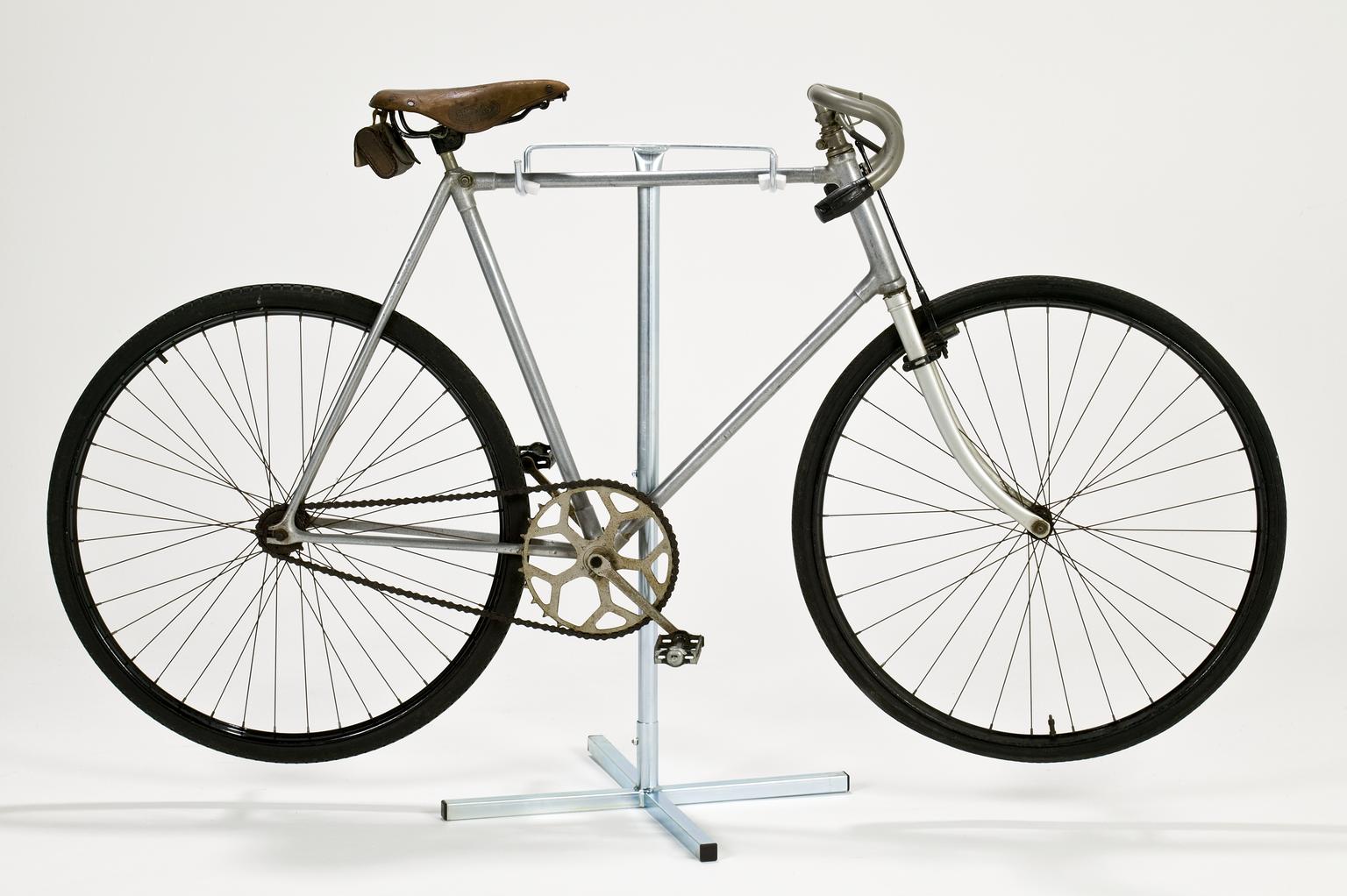
The ‘Boneshaker’ and the ‘Penny Farthing’ were predecessors of the safety bicycle. They may have been fun to ride but they were not very efficient and could only be enjoyed by those wearing the appropriate clothing. No long skirts or layers of petticoats were advisable on these cumbersome velocipedes.
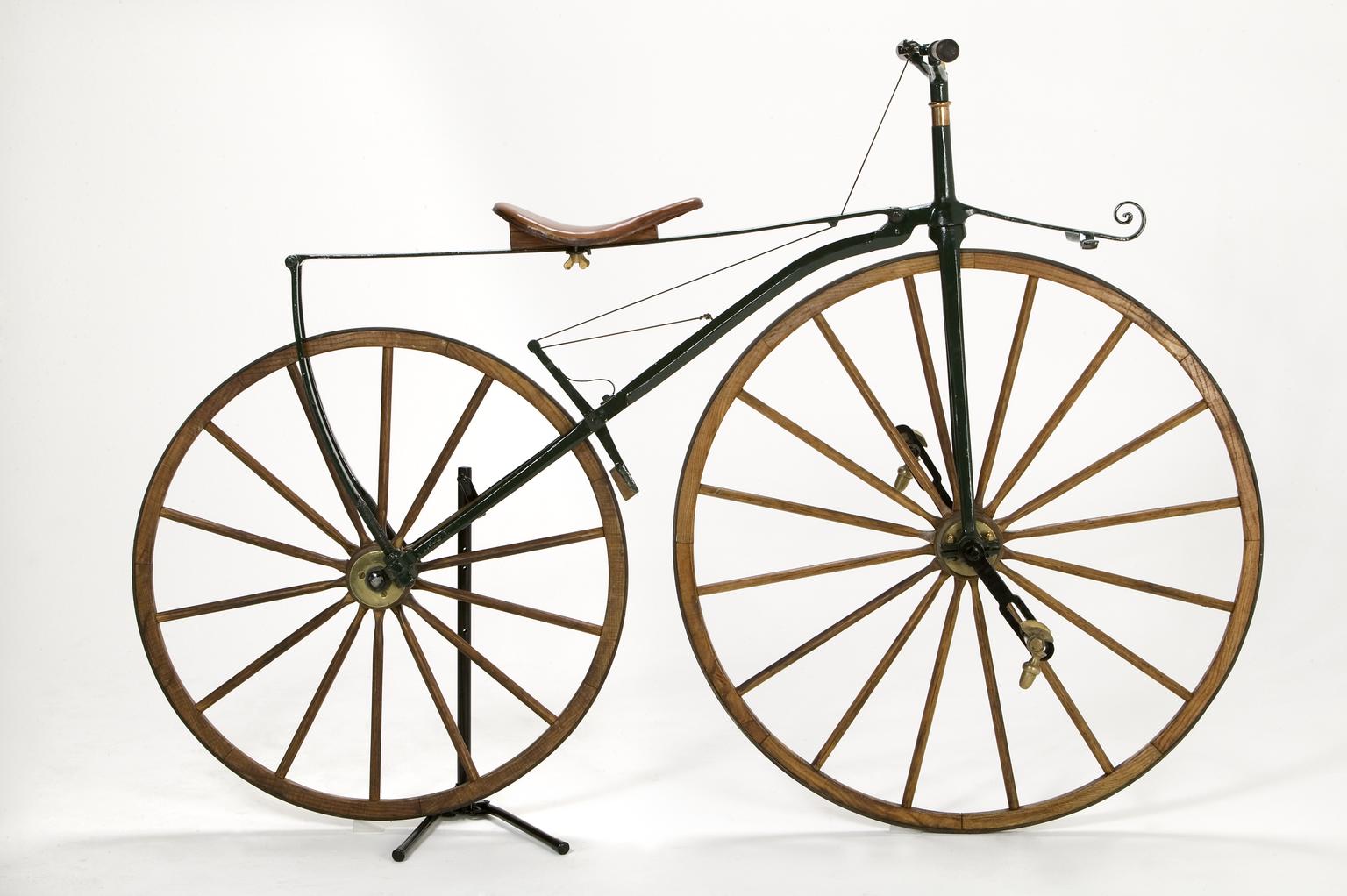
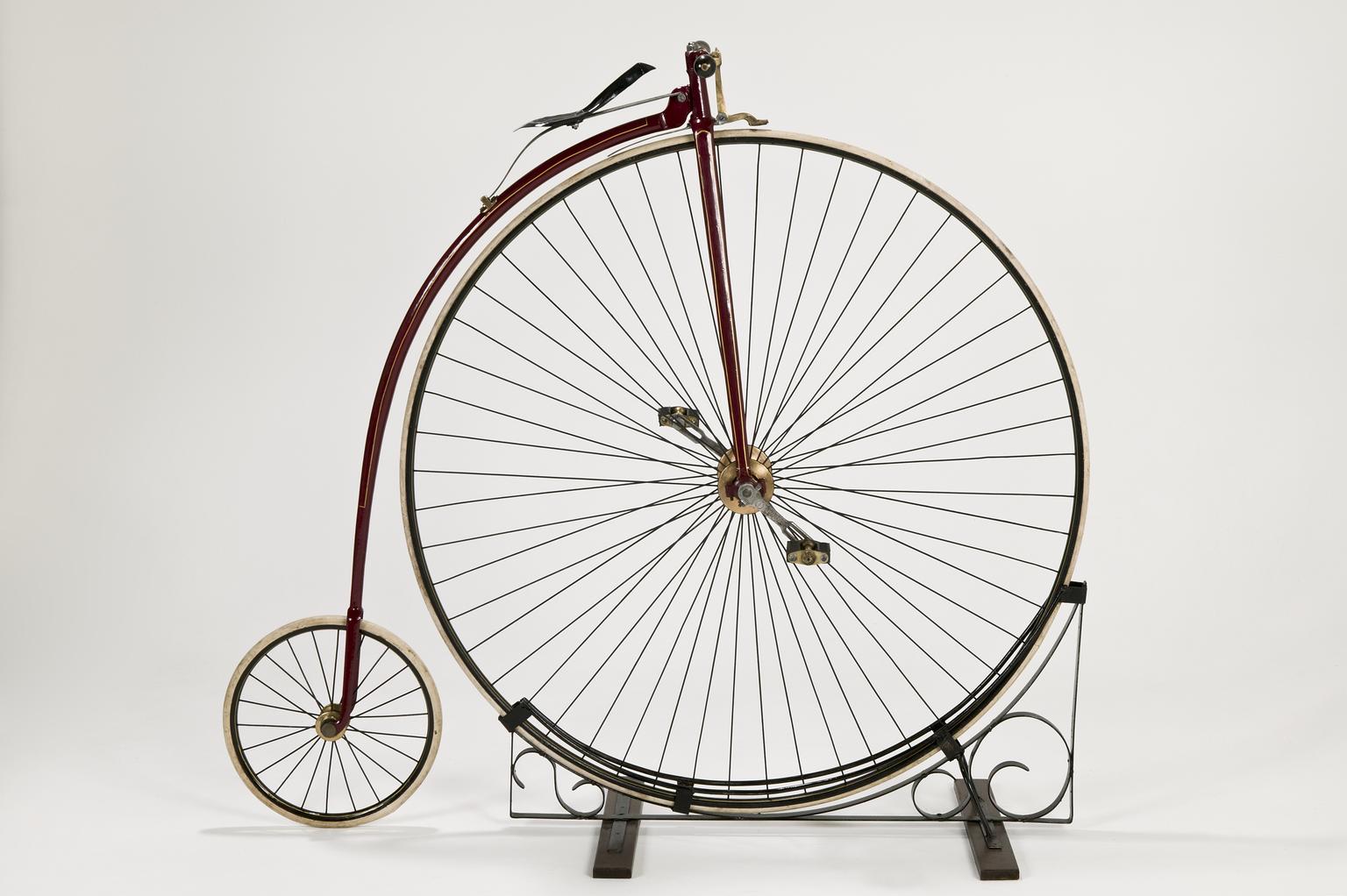
Cycling innovation in Manchester
If it weren’t for the work of a young man who was based in Greater Manchester, we might not have bicycles as we know them today.
In 1885, Hans Renold, a skilled Swiss-born engineer who was working in Salford, achieved a significant technical breakthrough when he patented the bush roller chain. With this revolutionary invention bike design change forever.
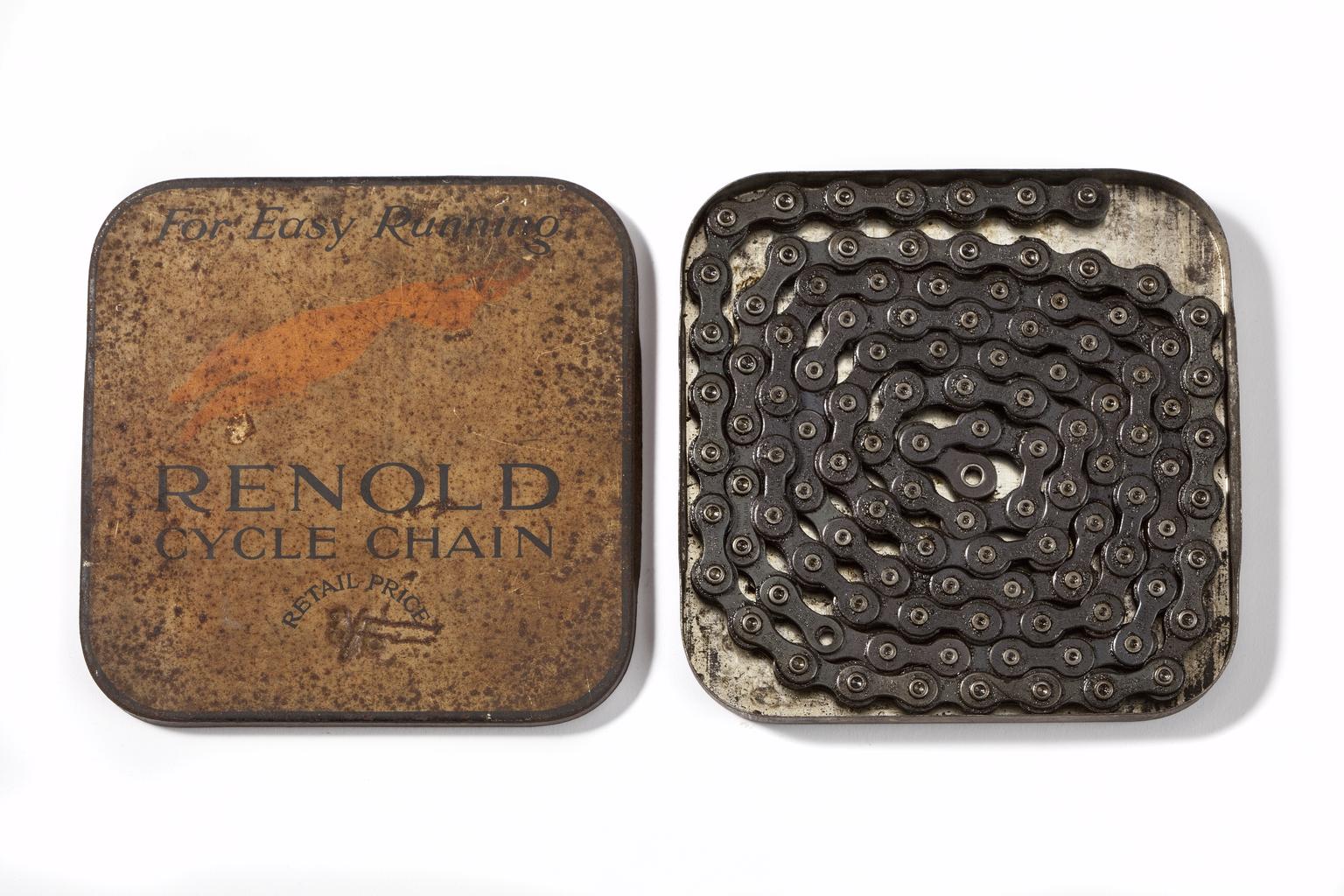
Renold’s invention brought a new level of performance, efficiency and flexibility to the transmission of mechanical power. His company and workforce grew, moving from Salford to Hulme and then to Burnage. Today, based in Wythenshawe, Renold, the company Hans founded, continues to supply the world with chain products.
Women’s clothing, or what society at the time expected of women, did not generally allow for riding a Penny Farthing or a Boneshaker. However, with the invention of the safety bike, cycling became open to women as never before as steering, safety, comfort and speed were improved. Adjustments were made for women to ride safety bikes. This new style bike was even called a ‘freedom machine’ as it allowed a feeling of freedom and self-reliance that was otherwise only known to men.
The health benefits of cycling were understood early on. In 1889 an article in the British Medical Journal reported that cycling alleviated constipation, and chronic gout can ‘thus be cured or at least kept at bay’. But it also warned that one must ‘as far as possible abstain from alcoholic beverages while on a journey’.
The National Cycling Centre opened in 1994 in East Manchester. It was Britain’s first indoor Olympic cycling track and would become known as the ‘medal factory’ because of its role in the British cycling success story. However, pedal-powered sporting successes have been coming out of Manchester long before sleek space-age helmets and brightly coloured skin-tight bodysuits.
Ernest ‘Wilf’ Higgins (1908–96) rode to victory in the 1934 British Empire Games, when the cycling events were held in Fallowfield, Manchester. He rode a similar bike to this Pemberton Arrow. ‘Pembertons’ were a well-reputed family business started in 1896 on Ashton Old Road, and continued until Wilf’s grandson Harold closed the shop in Washway Road, Sale in 1984.
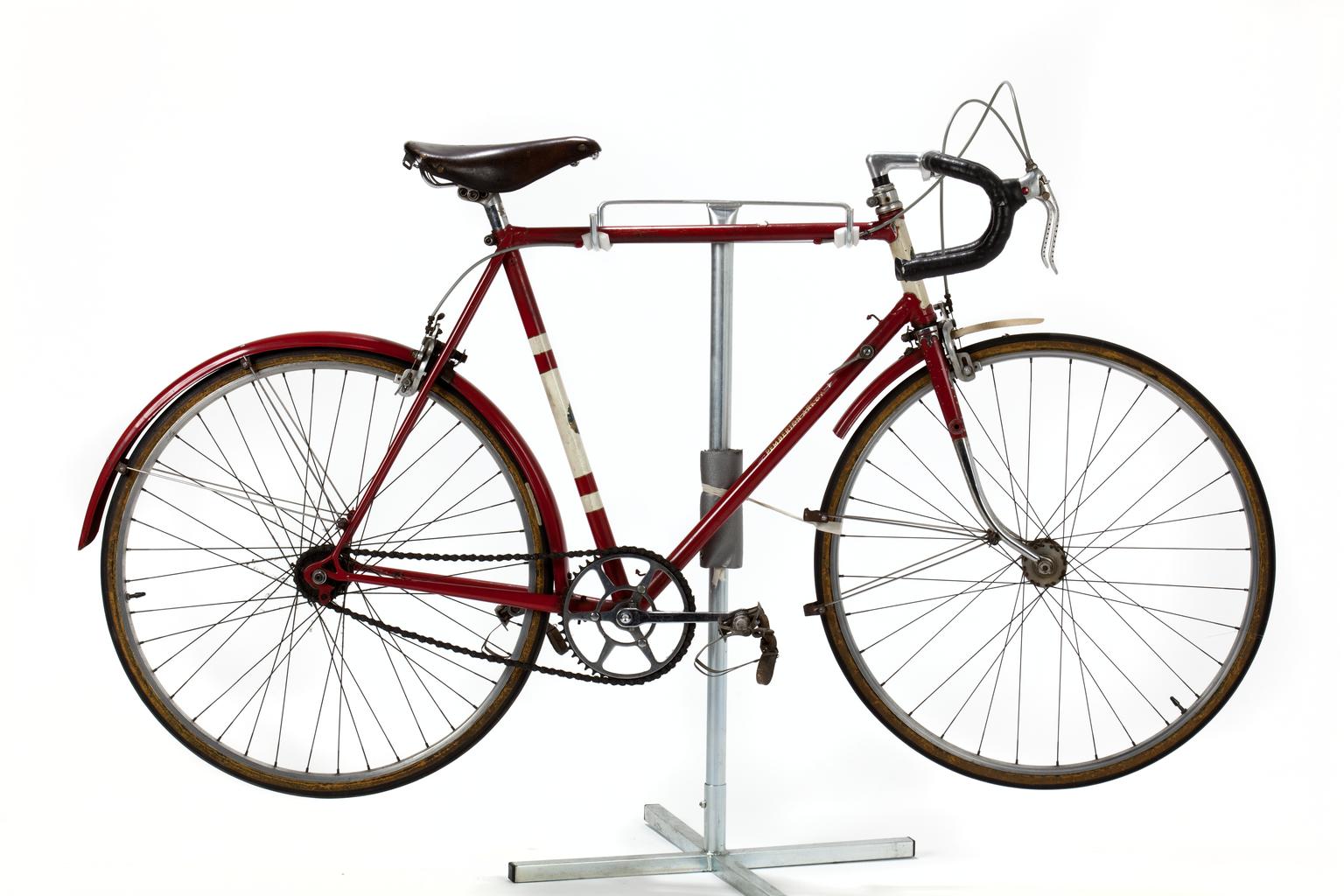
Does this machine below remind you of those home or gym exercise bikes? This ergometer was housed at the Manchester velodrome from 1996 and was probably used by the British cycling team there. It was developed by sports scientists at the University of Salford in the 1960s to measure the work done by muscle groups under different conditions. It helped prepare Olympians for the Mexico games in 1968. This was all long before high octane spin classes!
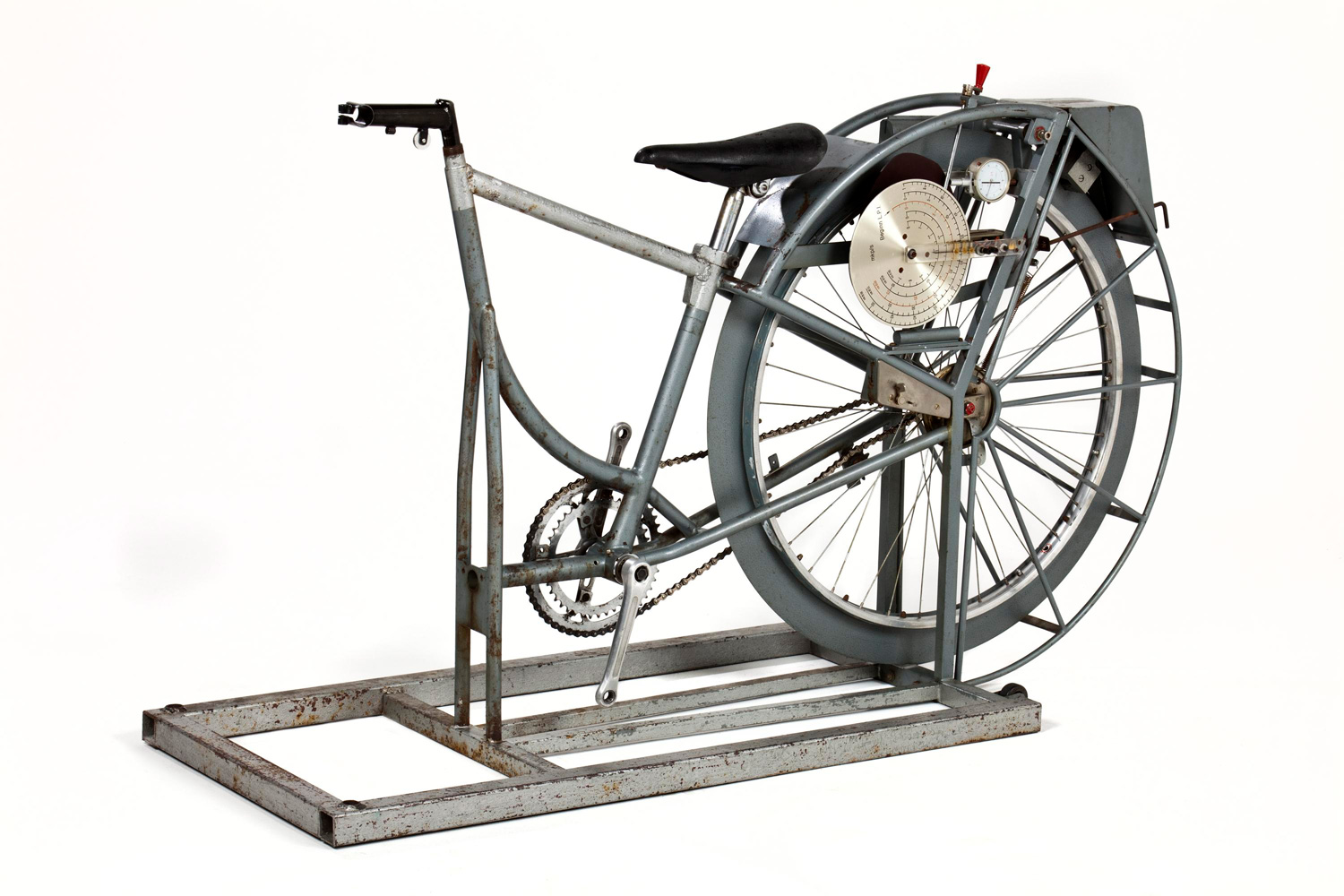
The future of cycling
Cycling will continue to play a part in shaping Greater Manchester’s future. Today there is great pressure to reduce the amount of toxic pollutants in the air of our cities. The increased level of carbon dioxide in our air, much of which is produced by the vehicles on our roads, is creating a warmer, more unstable planet. As the government pushes for ‘Clean Air Zones’, the message is that the biggest thing we can do to achieve this is to drive less. The vision for Greater Manchester is for it to become the very first city region in the UK to have a fully joined up cycling and walking network, the most comprehensive in Britain, covering 1,800 miles.
Cycling innovations in Manchester haven’t stopped. In 2017–18 the See.Sense bike light was trialled by cyclists in Greater Manchester. This smart light, which looks just like a standard bike light, gathers information about every journey the cyclist takes. This data can be used to plot the safest, most cycle-friendly routes. It can even react to obstacles like roundabouts and flash brighter. Smart technology can be used to help to make safer, healthier cities for all its users.
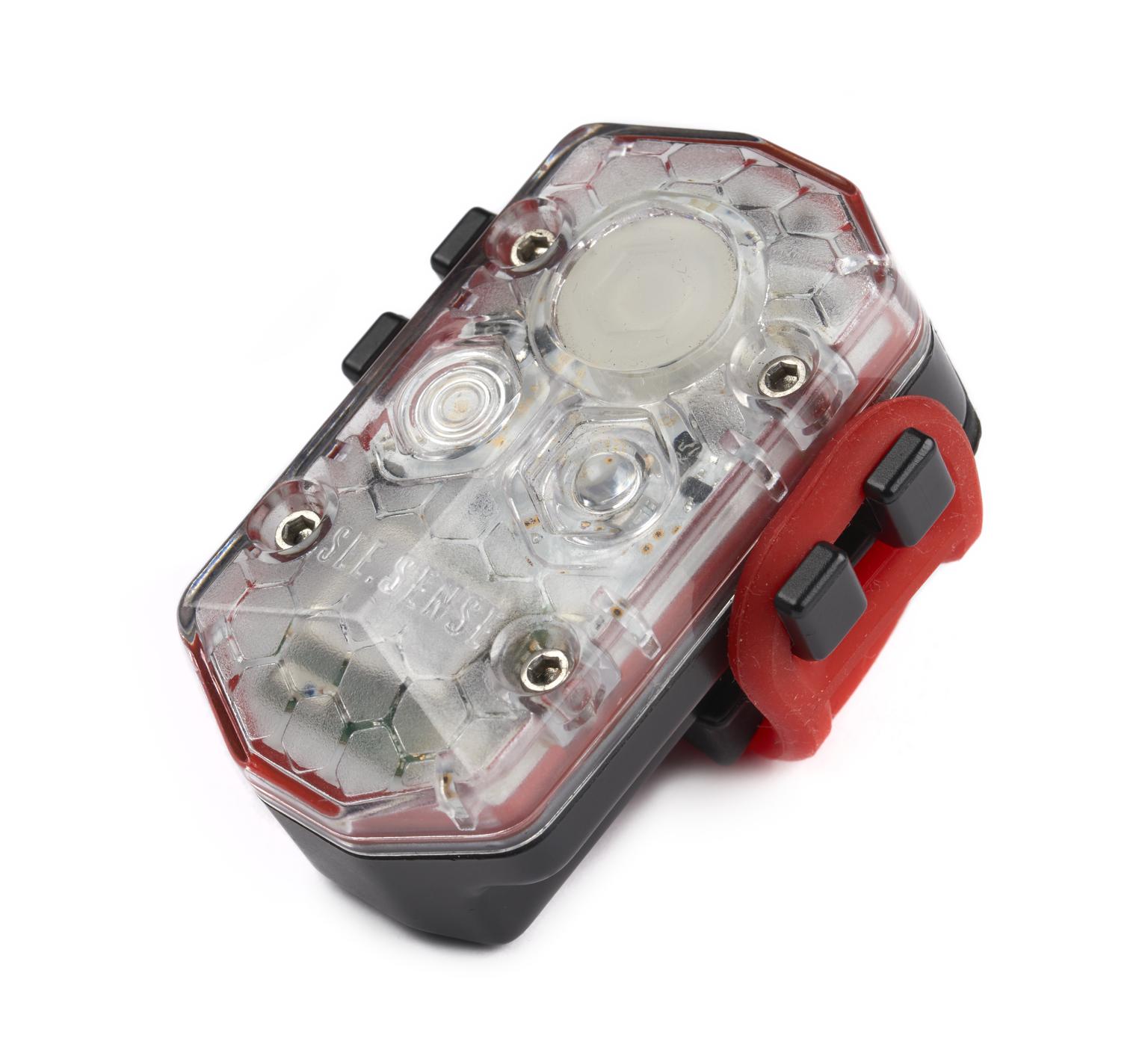
In response to the lockdown restrictions caused by COVID-19, local bike delivery services in Manchester, like Chorlton Bike Deliveries, are going from strength to strength. They are helping vulnerable and isolated people while increasing alternatives to cars, reducing pollution, and addressing climate change. You can get produce from local retailers brought to your home by pedal power, with a smile (socially distanced, of course).
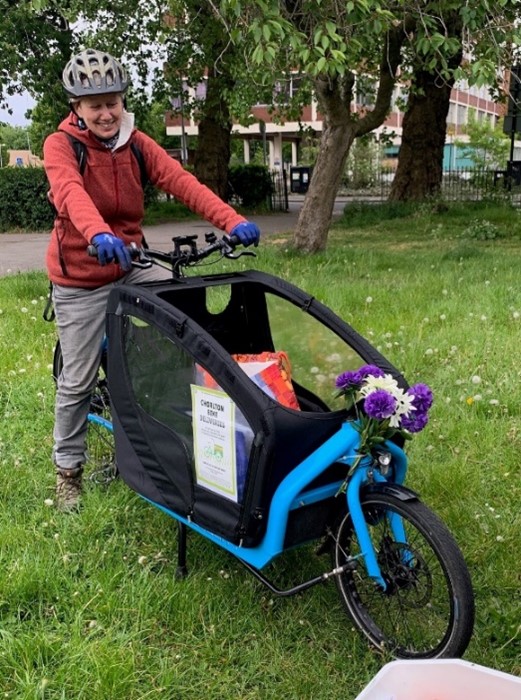
So, whether it is increased fitness, a quicker commute or meals and groceries delivered to your door, however you are contributing, and benefiting, from more bikes on our roads you can thank Hans Renold, a Manchester inventor who changed transport forever.
Dust off that bike, order bike deliveries and help save the planet one pedal at a time. The future for cycling in Manchester is bright (even if the weather isn’t always).
If you’re interested in sustainable ways of getting around, watch Transport: how can I be a good citizen of the world, with physicist Helen Czerski, which originally took place in February 2021 as part of Manchester Science Festival.
7 comments on “Cycling in Manchester: The road to sustainability”
Comments are closed.
Excellent article
Very informative indeed, and good luck to Manchester in its endeavour to be No. 1 in the future world of cycling .
A great read. I never knew Manchester had a bike industry, thought it was just Coventry and Nottingham.
Very well written indeed. Extremely informative. Just glad the penny-farthing is no longer the sought-after mode of transport it once was!
There were several small specialised bike builders in Manchester both pre and post WW2. I was born in Burnage and rode with the Withington Wheelers in the 1950 early 60s and rode a Johny Berry bike hand built in Manchester. The cycle route was the railway then!
“By 1900 around 1900 were listed”. Is that (amazingly) true – or a typo?
Hi Mick, good spot. I’ve updated accordingly (to ‘around 190‘).
All the best,
Mike (web manager)
A cracking read! Manchester is set to be the British ‘Belgium’ for Bikes. Learning from the peddling past to lead the way for future cyclists. Oh, and if you’re ever selling off the any of those fabulous machines, do let me know…especially the penny-farthing!